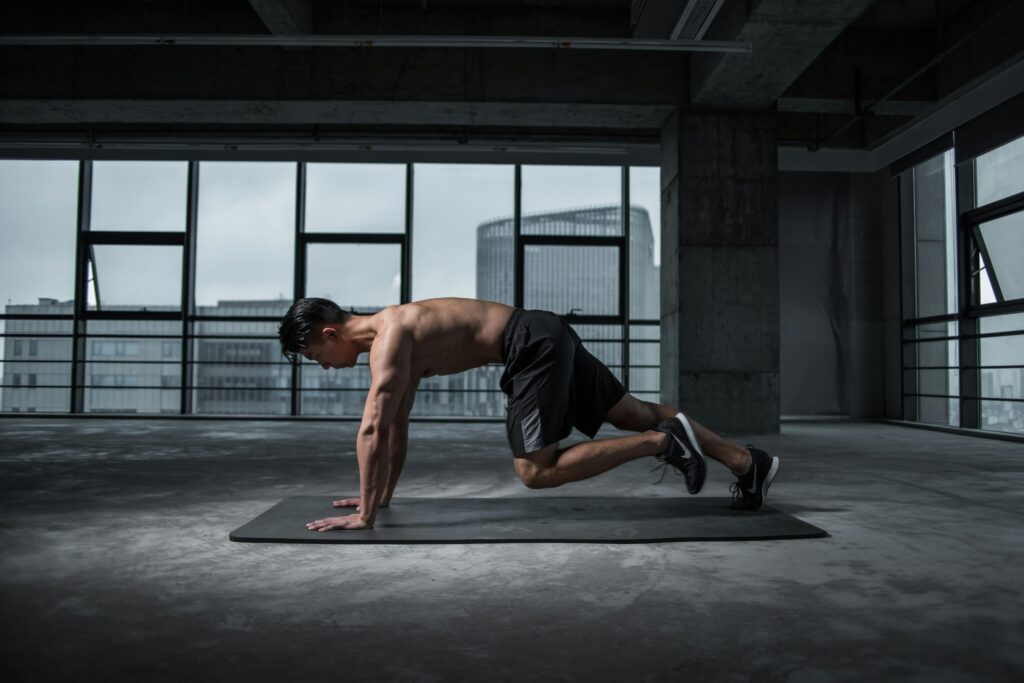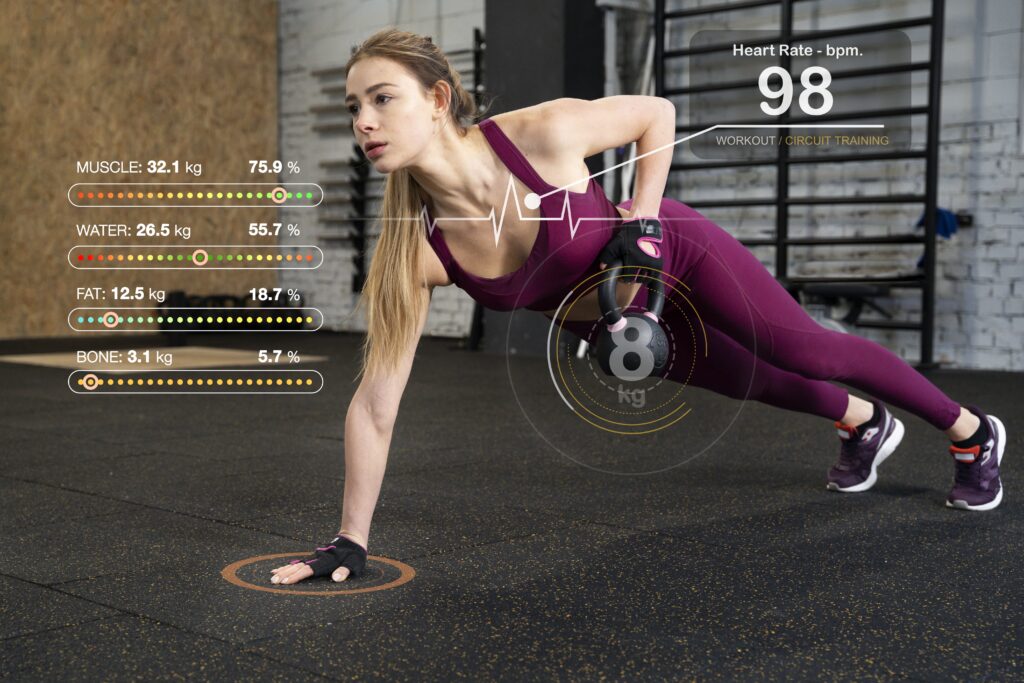The Rise of Stiff Strength
The modern fitness world has long celebrated heavy lifting, muscle growth, and endurance records, but it’s quietly ignored the foundation that makes all of those possible: mobility.
In 2025, the average gym-goer spends more time pushing limits than maintaining movement quality. Yet, data from the American Council on Exercise (ACE) reveals that nearly 68% of fitness-related injuries come not from overtraining, but from restricted movement patterns.
We’ve become stronger, but stiffer.
We’ve built muscles, but lost motion.
We can lift more, but can’t move better.
That’s where mobility training enters, the often-overlooked link that transforms strength into functional, pain-free power.
What Is Mobility Training?
Mobility isn’t just “stretching.” It’s the ability of your joints and muscles to move freely through their full range of motion with control. Unlike passive flexibility, mobility involves both strength and stability, allowing you to move fluidly, safely, and efficiently.
In practical terms, mobility training blends:
- Dynamic flexibility (movement-based stretching)
- Joint stability (control through motion)
- Motor coordination (how well your body communicates movement)
For example, being able to touch your toes doesn’t just mean flexible hamstrings, it means your hips, spine, and nervous system are coordinated enough to perform that action safely.
Key Principle: True strength begins where stiffness ends.
Why Mobility Is More Important Than Strength Alone
Traditional strength training builds tension. Mobility training teaches you to manage that tension across joints, improving efficiency and preventing injury.
Here’s what happens when mobility is ignored:
- Your hips tighten, limiting stride length and lower back stability.
- Your shoulders stiffen, reducing pressing and reaching capacity.
- Your ankles lock up, making squats or even stairs feel unnatural.
Over time, this leads to compensatory movement, where one muscle group overworks to cover for another, the root cause of many injuries.
A 2024 Journal of Movement Physiology study found that individuals who performed 10 minutes of mobility work before training had 40% fewer strain-related injuries and 20% better postural control compared to those who skipped it.
In essence: Mobility multiplies your strength. It’s not about how hard you train, but how well your body can express the strength you already have.
How Flexibility Improves Real-Life Movement
Mobility training directly impacts your ability to function in real life.
| Everyday Movement | Problem Without Mobility | Mobility Benefit |
| Getting out of bed | Morning stiffness, joint pain | Smooth, pain-free motion |
| Picking up groceries | Lower back strain | Stronger hip hinge and balance |
| Climbing stairs | Knee pain, instability | Improved ankle & hip mobility |
| Sitting for long hours | Tight hips, rounded spine | Open hips, upright posture |
| Reaching overhead | Shoulder impingement | Full shoulder range of motion |
Your strength only serves you if it supports movement, not restricts it.

Real-Life Case Studies: Movement That Transformed Lives
Case Study 1: The Marathoner Who Couldn’t Touch His Toes
Profile: David, 38, a recreational long-distance runner who had been training consistently for over five years. Despite his endurance, he often struggled with tight hamstrings and hip flexors, leading to recurring lower back discomfort.
Problem: David could run half-marathons with ease, but couldn’t bend forward without pain. His mobility issues began affecting his running form, especially during long runs and hill climbs. According to research from the American College of Sports Medicine (ACSM), poor flexibility in runners can lead to compromised stride efficiency and increased injury risk.
Intervention: A performance coach introduced David to a simple 12-minute daily mobility routine, focusing on hip openers, hamstring stretches, and dynamic core stability work. He followed it consistently for eight weeks, incorporating foam rolling and active recovery days into his schedule.
Result: After two months, David not only improved his running form and reduced his back pain but also shaved three minutes off his half-marathon time, without changing his mileage or training intensity. His newfound mobility allowed him to run smoothly, recover faster, and train more efficiently.
Case Study 2: The Office Worker Who Found Freedom Through Mobility
Profile: Amina, 41, a corporate manager who spends over 10 hours a day sitting in front of a screen, often working late into the night.
Problem: Amina noticed her posture collapsing during meetings and suffered from chronic shoulder tightness and upper back fatigue. Like many desk-bound professionals, her body adapted to stillness, not strength. Studies from the Harvard Health Publishing confirm that prolonged sitting weakens core muscles and contributes to musculoskeletal pain.
Intervention: Amina started integrating mobility micro-sessions into her day, 5 minutes in the morning and 10 minutes before bed. Her program included thoracic spine mobility drills, wall slides, cat-cow stretches, and resistance band openers.
Result: Within just four weeks, Amina experienced remarkable improvements in posture and energy. Her shoulder pain nearly disappeared, and she found it easier to stay upright during long work hours. Beyond the physical changes, she also reported better mental focus and less fatigue, proving how movement directly affects productivity and mood.
Also Read the Latest: Why Mobility Training Is Becoming the New Yoga in 2025
Case Study 3: The Fitness Coach Who Rediscovered Balance
Profile: Michael Thompson, 35, a certified personal trainer at Balance Performance Studio in Austin, Texas. Despite his experience, Michael struggled with chronic knee discomfort and tight ankles due to years of heavy squats and sprint training.
Problem: His strength was high, but his movement quality was declining. He couldn’t perform deep lunges without knee strain, which limited his ability to demonstrate exercises to clients effectively.
The issue wasn’t strength, it was an imbalance. According to findings from the National Strength and Conditioning Association (NSCA), mobility deficits are one of the top causes of preventable training injuries among athletes and coaches.
Intervention: Michael took a step back and shifted focus to controlled mobility. He integrated functional drills like loaded carries, Cossack squats, and ankle mobility work into his program. He also replaced one heavy training day with yoga-inspired mobility sessions.
Result: After six weeks, his knee pain was gone, and his squat depth improved dramatically. Even his clients noticed the difference in his form and energy. Michael described it best:
“Mobility training gave me back the freedom I didn’t realize I’d lost. Now, I teach it as a foundation, not an afterthought.”
Share Your Story with Active Health Sport
At Active Health Sport, we believe every story of transformation matters, whether it’s overcoming pain, rediscovering mobility, or building strength that fits real life.
If you’ve experienced a breakthrough in your health journey, big or small, we’d love to hear it. Your story could inspire others to take their first step toward better movement and sustainable fitness.
📩 Send us your story at: contact@activehealthsport.com
or connect with us on Instagram using #ActiveHealthSport
The Science of Mobility and Strength
| Aspect | Without Mobility | With Mobility |
| Strength Output | Limited due to joint restriction | Maximized through full range of motion |
| Muscle Recovery | Delayed due to poor blood flow | Faster recovery via better circulation |
| Injury Risk | High (compensation patterns) | Low (balanced movement) |
| Neuromuscular Efficiency | Poor coordination | Improved body awareness and control |
A 2025 meta-analysis by the International Journal of Sports Therapy concluded that mobility-focused athletes demonstrated 30% greater longevity in performance and 25% faster recovery rates compared to traditional strength athletes.
Also Read the Latest: Real-Life Strength: What is the Power Beyond Gym Numbers?
Practical 15-Minute Daily Mobility Routine
| Movement | Duration | Benefit |
| Cat-Cow Flow | 1 min | Loosens spine and relieves tension |
| Hip Circles | 1 min/side | Increases hip joint range |
| World’s Greatest Stretch | 1 min/side | Opens hips, hamstrings, and thoracic spine |
| Shoulder CARs (Controlled Articular Rotations) | 8 reps | Improves joint rotation control |
| Deep Squat Hold | 45 sec | Enhances lower body flexibility |
| 90/90 Hip Transitions | 10 reps | Builds hip control through movement |
| Downward Dog to Cobra Flow | 1 min | Boosts spinal mobility and circulation |
Perform this flow once daily, preferably in the morning, and you’ll notice lasting changes in movement quality and energy throughout the day.
Practical Tips for Building Sustainable Mobility
- Prioritize movement quality over stretch duration. Control is more valuable than reach.
- Incorporate mobility before strength training to prepare your joints.
- Add “movement snacks” during work hours, 2-3 minutes every couple of hours.
- Track progress not by flexibility, but by how effortless movement feels.
- Stay consistent. Mobility benefits compound gradually over time.
Final Recommendation: Movement Is Strength
In 2025 and beyond, mobility is the foundation of sustainable fitness.
It’s not about being the strongest person in the gym, but being the most capable one in real life, someone who moves freely, works pain-free, and stays active for decades.
When flexibility meets strength and control, that’s where real performance and true health begin.

FAQs
Is mobility training the same as yoga?
Not quite. While yoga promotes flexibility and mindfulness, mobility training focuses on strengthening joints, improving control, and enhancing movement range. It builds functional motion capacity, improving athletic performance and daily mobility.
How often should I train mobility?
You can start with 10-20 minutes of mobility work daily, or at least three to four times a week. Consistency is key, small, regular sessions produce noticeable movement improvements over time.
Can mobility replace stretching?
No, mobility complements stretching. Stretching passively lengthens muscles, while mobility activates and strengthens them through controlled motion, making flexibility functional and improving how your body actually moves.
I lift weights. Should I add mobility before or after workouts?
Add mobility both before and after. Pre-workout mobility prepares joints for better movement patterns; post-workout drills improve recovery, reduce stiffness, and maintain a healthy range of motion.
What’s the biggest mistake people make with mobility training?
Rushing through movements. Effective mobility requires patience and control. Fast, careless reps limit progress and can cause strain, focus on quality, not quantity, for the best results.
Does mobility training help prevent injuries?
Yes, mobility improves joint stability, tissue resilience, and body control, which significantly reduces injury risk during workouts and daily tasks by promoting balanced, coordinated movement patterns. Learn more about it: When Should You Do Stretching to Prevent Injuries?
You might also like the recent posts…

Kait Amazra is the founder and lead writer of Active Health Sport. With over 25 years of experience in health, fitness, and wellness education, Kait combines professional expertise with a passion for helping people live stronger, healthier, and more balanced lives.
As a licensed health and fitness professional, Kait has worked alongside industry experts to deliver evidence-based insights on physical activity, nutrition, recovery, and holistic well-being. Through Active Health Sport, Kait’s mission is to make trusted, practical, and science-backed health information accessible to everyone, from beginners building new habits to athletes seeking peak performance.

